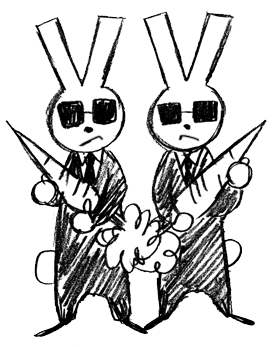From hard walls to fluffy blocks – let’s compost the negative nastiness in our progressive spaces.
A reflection on toxic communication in radical spaces, and how to build something better.In the 20th century, much of the nastiness came from the hard vertical left. Back then, control, ideology, and vanguardism created rigid hierarchies, enforced through forceful exclusion and dogma. In the 21st century, that same exclusion comes from the “fluffy” horizontal left, the #fashionista crew wrapped in progressive aesthetics. It’s still fear and control. It’s still the same mess. And it still needs composting.
Even in spaces that claim openness and justice, we see “common sense” pushing of gatekeeping, moral absolutism. From both ends, the old vertical hardliners and the new fluffy puritans, we’re still well stuck in cycles of not hearing each other. One of the hard problems of the current left/progressive paths is this intolerance and dogmatic nastiness dressed up in fluffy cloth. Historically, from the hard vertical left, but much more common today is from our “fluffy” #fashionista “progressive” crew and their pushing of postmodernist language games as #blocking.
It’s a real and persistent issue in left/progressive paths, we do all service by worshipping a #deathcult, so people are often “wrong” as this common sense worship is the normal, not the exception. It is a cycle where gatekeeping, moral absolutism, and social exclusion dominate on every side. But when this comes from the “fluffy” or “horizontal” side, it is even harder to talk about, as it’s too often masked as care or safety, but still ends up reinforcing fear and control.
Non-nasty communication would be rooted in trust, a touch of humility, and most importantly shared purpose, and could look like a presumption of good intent, default to assuming people are trying, even if they fail. Then we need to replace instant cancellation with curiosity, “What do you mean by that?” or “Can we unpack that together?” in more constipated language that works for some more academic people.
Yes we do need clear boundaries without exclusion, you can say “That’s not OK here” without blocking, shaming, or exiling. Encouraging dialogue before disengagement builds stronger communities than isolation does. Then in every step visible open process (#4opens Style).
In group process, clear decision-making, open archives, transparent moderation, and rotating responsibility make space for people to learn and grow instead of fear missteps. If this goes wrong, and it will, deep listening, slow speaking. Let things sit. Respond with reflection, not reflex. Allow pauses and silences; don’t rush to dominate with the “correct” take.
In the end, it’s best to see conflict as compost, not crisis. See disagreement as a chance to grow shared understanding, hold space for messy difference rather than rushing to resolution or punishment. A part of this is inviting language, use “we,” “let’s,” and questions more than commands or declarations. Say “I’m wondering if…” instead of “You’re wrong because…”
In short and sharp, what to do when people are “wrong”, treat people as comrades, not problems is a good first step. Communication should be generative, less about winning, more about creating together. #KISS we do need to compost this nasty mess, do you need a shovel #OMN
Then OK in the end you might end up hitting each other, but this should always be long down the process path, long down. Hope this helps 😉
